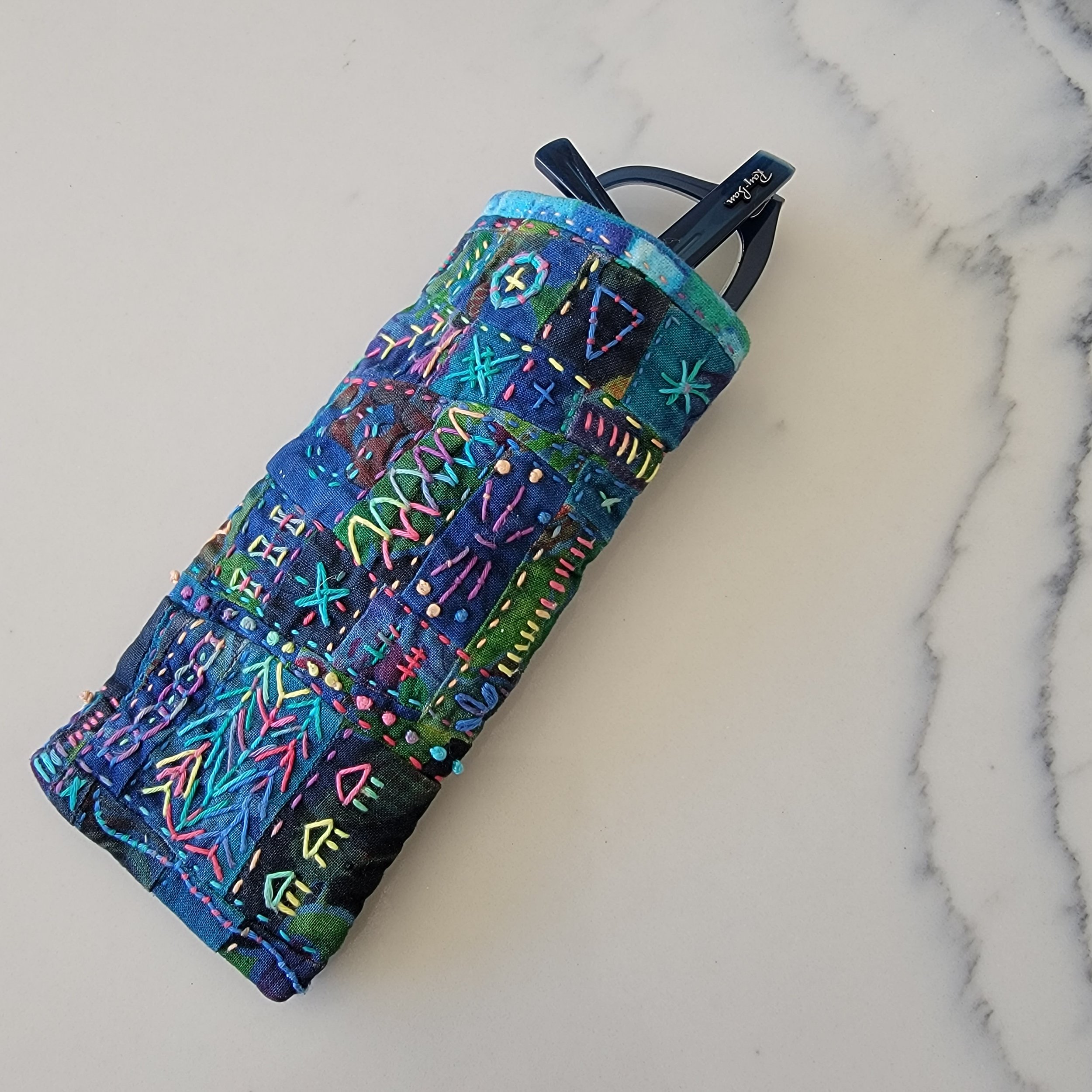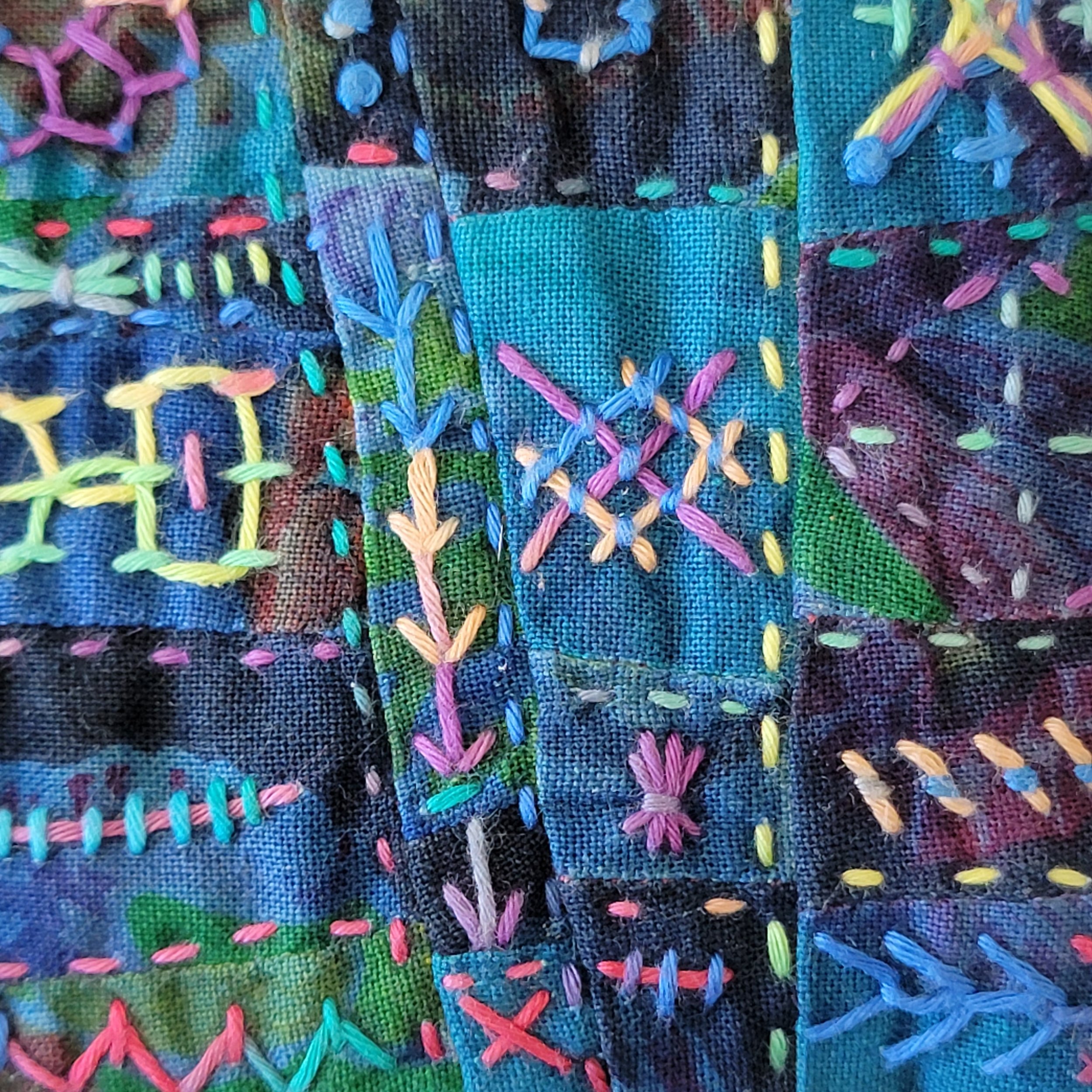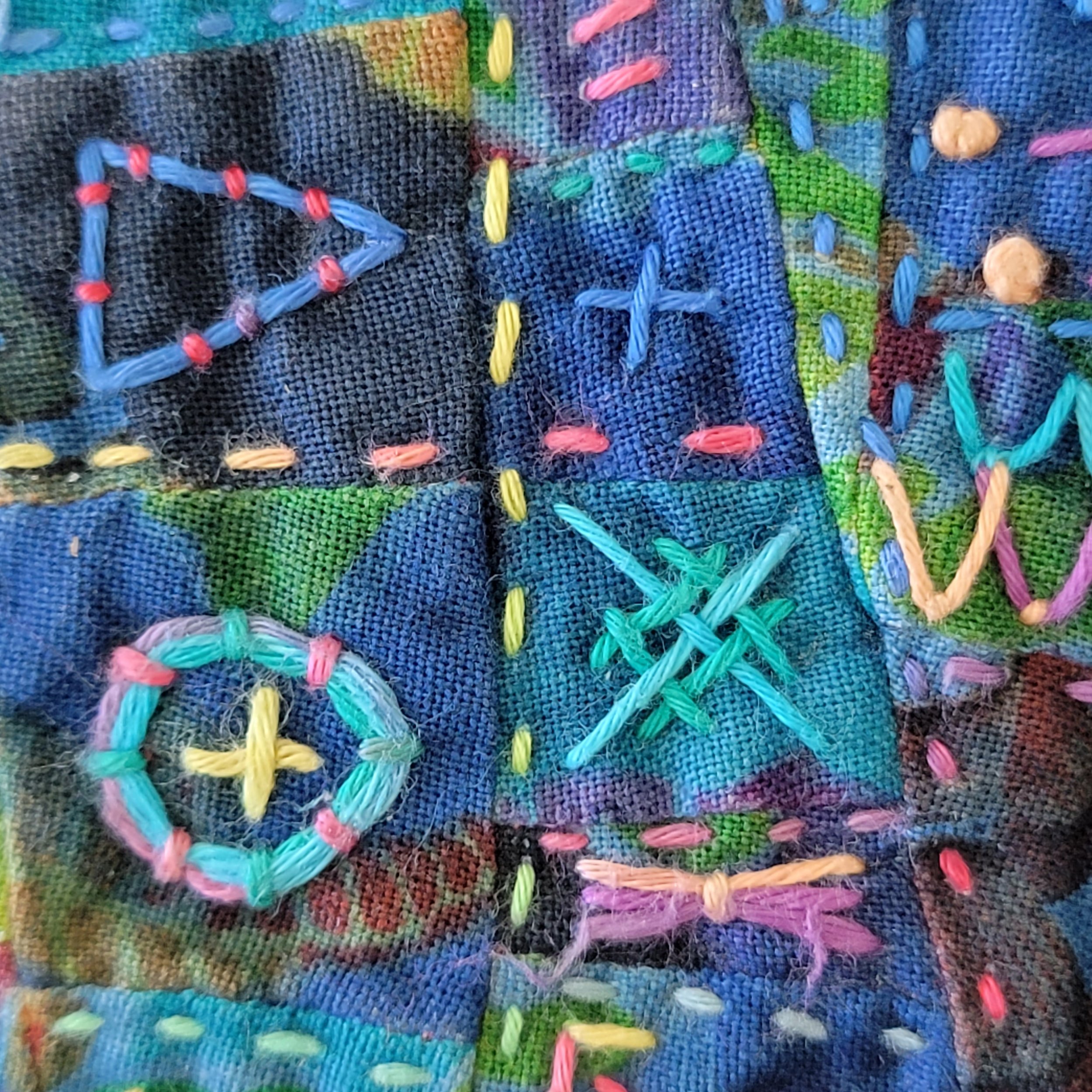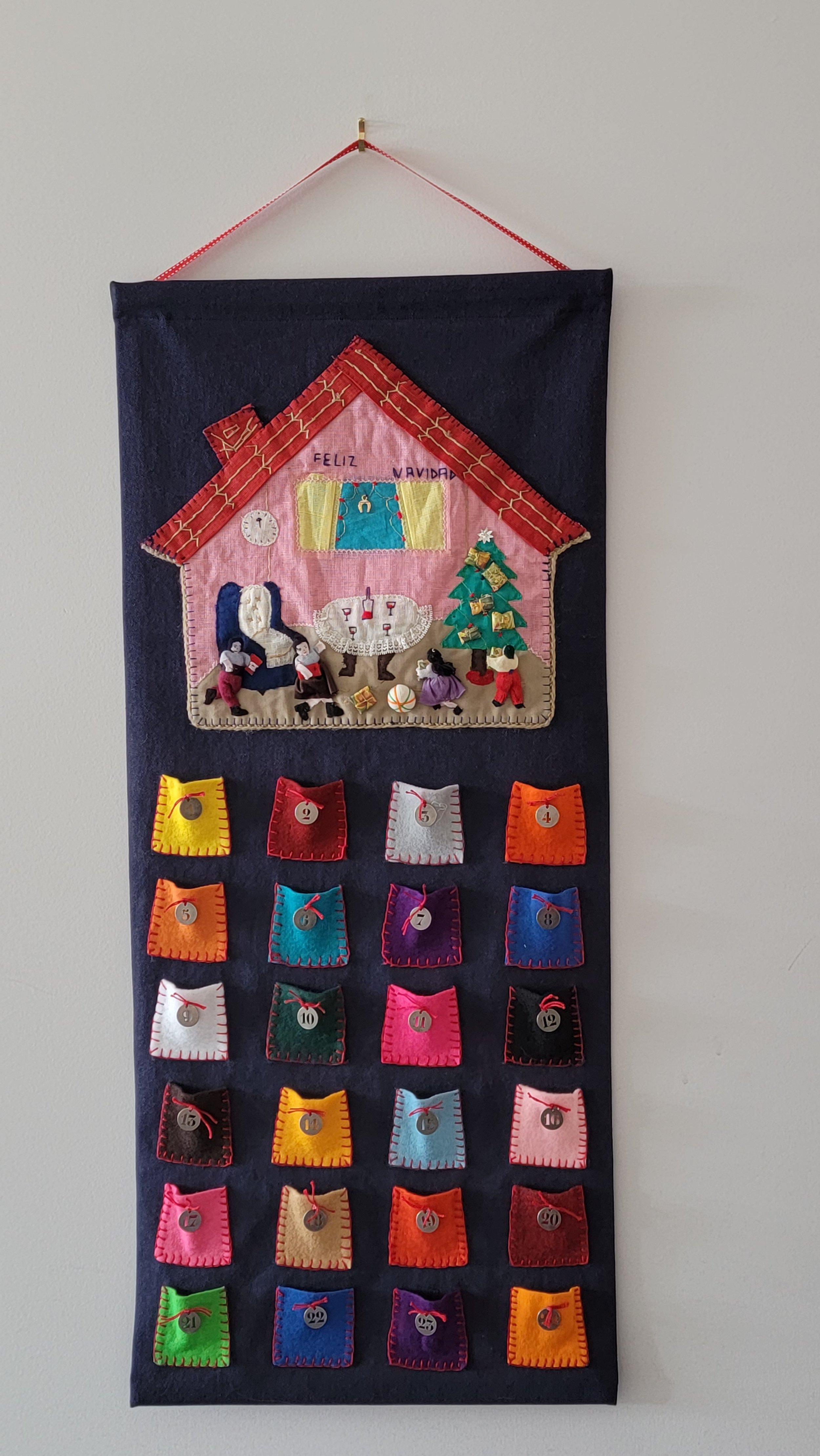In a world turning slowly, but thankfully, toward a focus on sustainability and creativity, upcycling scrap materials to craft practical items is becoming both a creative and regenerative practice. It just feels better to have made something old into something new. Making an eyeglass case using assorted scraps, combined with the art of sashiko embroidery techniques, offers an opportunity to repurpose materials while creating something both functional and aesthetically pleasing.
Hand stitched eyeglass case made up of scraps, with hand embroidered decoration, other side
Gathering Materials:
To begin this DIY project, collect an assortment of scrap materials. Fabric scraps from previous projects, old denim from worn-out jeans, or any durable material like canvas or linen are excellent choices. I used scraps from an earlier quilting project, and after piecing them together cut them down to a small scale, which I think works well with the small dimensions of an eyeglass case. You'll also need sashiko thread, a thicker and stronger thread traditionally used in Japanese embroidery. I chose a variegated cotton thread from Olympus that I ordered on Amazon that's become one of my favorites for embroidering.
Sashiko thread stitches
Patchwork Assembly:
Start by cutting your chosen fabric into pieces of suitable sizes to form the front and back of the eyeglass case. To figure out the size and shape just lie your glasses on a piece of paper and draw a rectangle that encompasses them. To make the fabric that will become the eyeglass case, I kept assembling and then cutting the pieces and assembling them again to a smaller and smaller scale, so that I’d have lots of embroidery opportunities.
A few of the stitches I used on the patchwork eyeglass case
Use a sewing machine or hand-stitch the scraps together in a patchwork, creating a cohesive front and back panel. For added strength and a unique touch, consider using different stitching styles or incorporating visible mending techniques.
I lined my case with a bit of flannel cut out of an old pair of pajama pants. The cloth is super soft, thanks to many good sleeps, and a good reuse of much-loved pajamas. There's something comforting about seeing those old jammies every time I pull out my glasses.
Close-up of hand stitched eyeglass case
Dyeing and Finishing:
After completing the piecing, consider dyeing the fabric to unify the patchwork and enhance the overall look. Choose natural dyes or fabric-safe dyes, ensuring they complement the colors of your embroidery and patchwork. I dyed this eyeglass case in my indigo vat, but I'm intrigued to try again with the fiber-reactive ice-dyeing I've recently been experimenting with.
Once dyed and dried, assemble the front and back panels with the lining, stitching them together inside out. Leave an opening to turn the case right side out, then hand-stitch or machine-sew the opening closed.
Variegated threads used to embellish patchwork
Embellishing with Sashiko Embroidery:
Sashiko, a form of decorative reinforcement stitching, not only strengthens the fabric but also enhances its visual appeal. Thread your needle with sashiko thread and choose a pattern or design for your embroidery. Traditional sashiko patterns often feature geometric shapes or intricate motifs.
Carefully embroider over the patchwork, using the sashiko thread to create beautiful, functional patterns. Sashiko stitches like running stitch, chain stitch, or geometric patterns like waves or concentric circles can elevate the eyeglass case's appearance.
But for this project, use Sashiko techniques as a jumping-off point, as I did. Follow your heart. And honor the talent, skill, and artistry of the many generations of Sashiko artists we can never replace. As I did a traditional Sashiko stitch, a different shape or stitch appeared to me, and I let that guide me to the next jumping-off point.
Embroidery stitches on scrap patchwork













